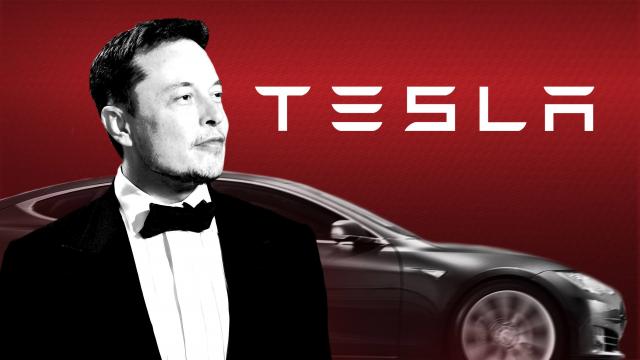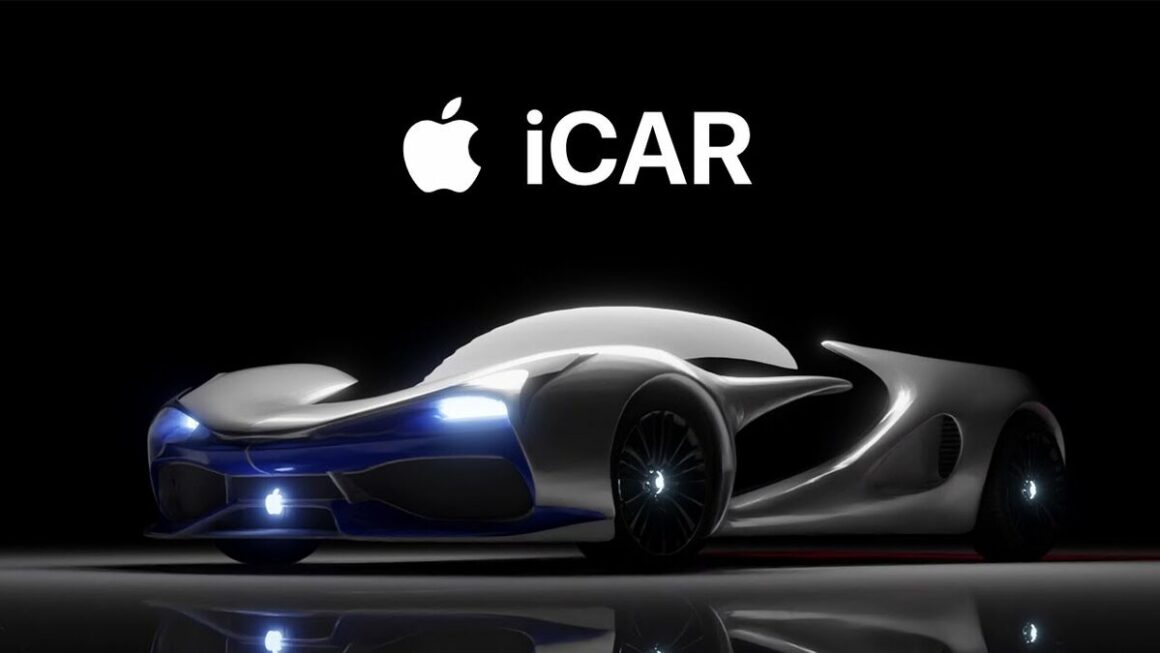Tesla is an American electric vehicle and clean energy company that was founded in 2003 by Elon Musk, JB Straubel, Martin Eberhard, Marc Tarpenning, and Ian Wright. The company is headquartered in Palo Alto, California, and has manufacturing facilities in the United States, China, and Europe.
Tesla’s first product was the Tesla Roadster, a sports car that was introduced in 2008. The Roadster was the first highway-capable electric car to use lithium-ion battery cells, which allowed for a longer range than previous electric cars.
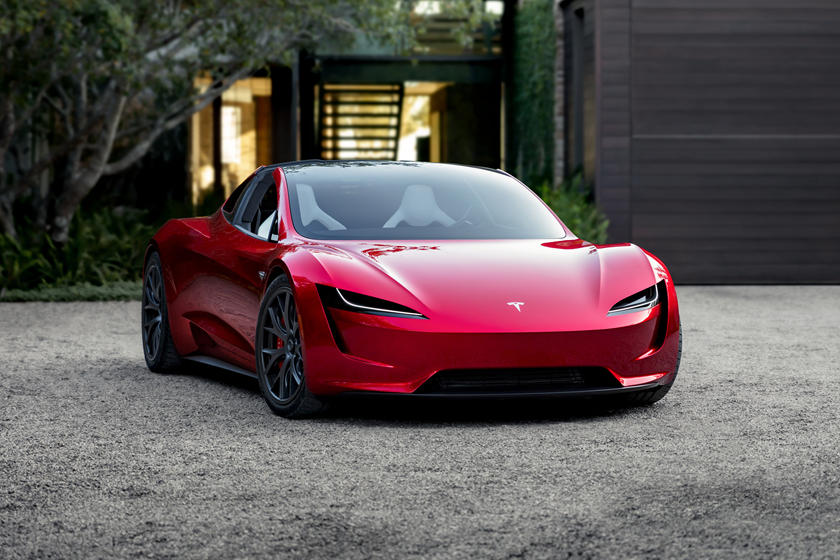
Tesla went on to introduce the Model S, a luxury electric sedan, in 2012, followed by the Model X SUV in 2015, the Model 3 mid-size sedan in 2017, and the Model Y compact SUV in 2020.
In addition to producing electric vehicles, Tesla is also involved in the production of clean energy products, including solar panels and energy storage systems. The company’s solar products include solar panels, solar roofs, and solar-powered charging stations. Tesla’s energy storage systems include the Powerwall, a rechargeable lithium-ion battery designed for home use, and the Powerpack, a larger battery system designed for commercial and utility use.
One of Tesla’s main goals is to accelerate the transition to sustainable energy. The company’s mission is to “accelerate the world’s transition to sustainable energy” by producing electric vehicles and clean energy products that are affordable, accessible, and environmentally friendly. Tesla has also been a leader in the development of autonomous driving technology, with features such as Autopilot and Full Self-Driving (FSD) designed to make driving safer and more efficient.
Overall, Tesla has had a significant impact on the automotive industry and the transition to sustainable energy. The company’s innovative products and technologies have helped to make electric vehicles more mainstream and accessible, and have helped to spur competition and innovation in the industry as a whole.
Different Product Segments of Tesla
Its not a standalone company, its a clean energy empire! Read about its different segments –
Electric Vehicles
Tesla’s electric vehicles (EVs) are a major part of the company’s product portfolio and have helped to establish Tesla as a leader in the EV market. Here are some additional details on Tesla’s EV segment:
- Battery Technology: Tesla’s EVs are powered by lithium-ion batteries, which are designed and manufactured in-house by Tesla. The company’s battery technology is a key differentiator, as Tesla has been able to improve the energy density and efficiency of its batteries over time. This has resulted in longer driving ranges and faster charging times for Tesla’s EVs.
- Models: Tesla currently offers four EV models: Model S, Model 3, Model X, and Model Y. The Model S is a luxury sedan with a range of up to 405 miles per charge. The Model 3 is a mid-size sedan that is more affordable than the Model S, with a range of up to 353 miles per charge. The Model X is a luxury SUV with falcon-wing doors and a range of up to 371 miles per charge. The Model Y is a compact SUV with a range of up to 326 miles per charge.
- Autopilot: Tesla’s EVs are equipped with advanced safety and convenience features, including autopilot. Autopilot is a driver assistance system that uses cameras, sensors, and other technology to assist with steering, braking, and other driving tasks. Tesla is continually improving and updating its autopilot system to make it safer and more effective.
- Supercharger Network: Tesla has developed a network of Superchargers, which are high-speed charging stations that can replenish a vehicle’s battery quickly. The Supercharger network is strategically located along major travel routes and in key urban areas, making it easy for Tesla drivers to travel long distances and recharge their vehicles quickly.
- Over-the-Air Updates: Tesla’s EVs receive over-the-air software updates, which can improve performance, add new features, and fix bugs. This means that Tesla’s EVs can get better over time, without the need for a physical upgrade or a visit to a dealership.
- Sustainability: Tesla’s EVs are designed to be sustainable, with a focus on reducing greenhouse gas emissions and improving air quality. By driving an EV, customers can reduce their carbon footprint and help to create a more sustainable future.
Overall, Tesla’s EV segment is focused on delivering high-performance, sustainable vehicles that provide a superior driving experience. With advanced battery technology, autopilot, the Supercharger network, and over-the-air updates, Tesla’s EVs are at the forefront of the EV market and are helping to accelerate the transition to a more sustainable transportation system.
Solar Panels:
Tesla’s solar panel segment offers a range of high-quality solar panel products designed to help customers generate their own clean energy. Here are some additional details on Tesla’s solar panel segment:
- Solar Panel Technology: Tesla’s solar panels are made using high-quality materials, including tempered glass and monocrystalline solar cells. These materials help to ensure that Tesla’s solar panels are durable and long-lasting, with a low risk of damage from weather events or other environmental factors.
- Aesthetic Design: Tesla’s solar panels are designed to be sleek and low-profile, with a modern aesthetic that complements the design of the home or building. Tesla offers a range of panel sizes and configurations to fit a range of customer needs, from residential to commercial and industrial.
- Energy Output: Tesla’s solar panels are designed to be highly efficient, with a high energy output per panel. This means that customers can generate more energy with fewer panels, reducing the overall cost of their solar panel system.
- Energy Storage: Tesla’s solar panels can be combined with the company’s energy storage products, including the Powerwall and Powerpack, to provide a complete energy solution. The Powerwall is designed for residential use and can power a home during an outage or when electricity rates are high. The Powerpack is designed for commercial and utility-scale applications and can be used to provide backup power, reduce peak demand charges, and more.
- Monitoring and Control: Tesla’s solar panel systems come with a monitoring and control system that allows customers to track their energy production and consumption in real-time. This helps customers to optimize their energy usage and identify opportunities for additional savings.
- Energy Consulting: Tesla offers energy consulting services to help customers design and install the optimal solar panel system for their home or business. Tesla’s energy consulting services include an energy audit, customized design, and financing options to make solar panel installation more affordable.
Overall, Tesla’s solar panel segment is focused on delivering high-quality solar panel products that help customers generate their own clean energy. With efficient panel technology, aesthetic design, energy storage options, monitoring and control systems, and energy consulting services, Tesla is helping to accelerate the transition to a more sustainable energy future.
Energy Storage:
Tesla’s energy storage segment is focused on providing customers with reliable and efficient energy storage solutions that enable them to use renewable energy more effectively. Here are some additional details on Tesla’s energy storage segment:
- Products: Tesla’s energy storage products include the Powerwall, Powerpack, and Megapack. The Powerwall is a residential battery storage system that can be installed in a home or small business. The Powerpack is designed for commercial and utility-scale applications and can be used to store energy from renewable sources, reduce peak demand charges, and provide backup power. The Megapack is a larger-scale energy storage solution that is designed for large-scale renewable energy projects, grid-scale applications, and industrial energy storage.
- Battery Technology: Tesla’s energy storage products use the same lithium-ion battery technology that powers its EVs. The batteries are designed to be durable and long-lasting, with a low risk of failure or damage. Tesla’s battery technology is also highly efficient, allowing customers to store and use energy more effectively.
- Control and Monitoring: Tesla’s energy storage products come with a control and monitoring system that allows customers to monitor their energy usage and storage in real-time. This system can also be used to control when energy is stored and when it is used, helping customers to optimize their energy usage and save money on their electricity bills.
- Integration with Solar Panels: Tesla’s energy storage products can be combined with the company’s solar panel products to provide a complete energy solution. By combining solar panels with energy storage, customers can store excess energy generated during the day and use it to power their homes or businesses at night or during periods of high demand.
- Grid Services: Tesla’s energy storage products can also be used to provide grid services, including frequency regulation, voltage support, and peak shaving. These services can help to stabilize the grid and make it more resilient, while also providing additional revenue streams for customers who participate in energy markets.
Solar Roof: Tesla’s Solar Roof is a unique product that integrates solar panels into the roof of a home or building, providing a seamless and attractive look. The Solar Roof is made of tempered glass tiles that are designed to be durable and long-lasting, while also generating electricity. The Solar Roof can be installed on new construction or as a replacement for an existing roof.
Energy Services: Tesla’s energy services include a range of offerings designed to help customers save money and reduce their carbon footprint. For example, Tesla offers solar panel installation services, which include an energy audit and customized design to ensure the solar panel system meets the customer’s needs. Tesla also offers energy consulting services, which can help customers identify opportunities to reduce energy usage and costs in their homes or businesses.
Overall, Tesla’s product segments are designed to work together to create a sustainable energy ecosystem that provides clean and affordable energy to customers. Tesla is leading the way in the transition to a more sustainable energy future, and its innovative products and services are helping to make this future a reality.
Additional Information
Tesla’s autopilot feature was made available in Model S from 2014. From 2012 the company started building superchargers in the U.S. and Europe for quick charging of the battery and no additional cost for Tesla owners. In September 2015, Tesla began to deliver Model X. It is a luxury SUV built on the same platform as Model S. In March 2016, Tesla unveiled Model 3, a fastback sedan. As of March 2020, it is the best selling electric car in the world. In March 2020, Tesla came up with Model Y, another SUV of Tesla based on the Model 3 platform.
Tesla acquired SolarCity in 2016. With this acquisition, Tesla ventured into the segment of the solar roof and solar panels. The company offers these products at the lowest price in the U.S at $1.49/watt. This pricing can be explained by the fact that other solar companies spend heavily on the salesperson, advertisements, and different financial instruments while Tesla does not. Tesla recently came up with version 3 of the solar roof tiles, now called Solarglass.
As per the company’s claims, it started producing 1000 Solarglass roofs per week. It faces installation challenges to achieve its installation target of 1000 Solarglass roof per week in the U.S. As per some estimates, installing 200 solar roof panels per week in 2020.
How Does Tesla Makes Money? – Revenue Streams of Tesla
Tesla has multiple revenue streams, with the company’s revenue generated from its electric vehicle sales, energy products sales, and other services. Here’s a detailed overview of each revenue stream:
Electric Vehicle Sales: Tesla’s electric vehicle sales have been the primary driver of the company’s revenue growth. The company sold over 500,000 vehicles in 2020, generating $31.5 billion in revenue. Tesla’s vehicle sales are expected to continue to grow in the coming years, with the company planning to launch new models and expand its production capacity.
Energy Products Sales: Tesla’s energy products, including the Powerwall, Powerpack, and Solar Roof, have also contributed to the company’s revenue growth. In 2020, Tesla’s energy storage and solar revenue increased by 60% year-over-year, generating $2.6 billion in revenue. The company has been expanding its energy products business, opening new production facilities and launching new products such as the Megapack, which is designed for utility-scale energy storage.
Services Revenue: Tesla’s services revenue comes from a variety of sources, including maintenance and repairs, software updates, and vehicle customization. The company has been expanding its service offerings, including the launch of a mobile service program that allows Tesla technicians to perform repairs and maintenance at a customer’s home or workplace. Tesla has also been developing new service offerings, such as a robotaxi service that would allow customers to use their Tesla vehicles to earn money by providing ridesharing services.
Regulatory Credits: Tesla’s sale of regulatory credits has become an increasingly important revenue stream for the company. In 2020, Tesla generated $1.6 billion in revenue from the sale of regulatory credits. The company is expected to continue to generate significant revenue from this source, as more automakers transition to electric vehicles and need to purchase credits to meet emissions targets.
Other Revenue Streams: Tesla’s other revenue streams include the sale of merchandise and accessories, which generated $1.1 billion in revenue in 2020. The company has been expanding its merchandise offerings, including launching new apparel lines and opening new retail stores. Tesla has also been expanding its charging network, which provides charging services for electric vehicles. The company’s Supercharger network now includes over 25,000 charging stations globally, providing a convenient charging option for Tesla owners.
In summary, Tesla’s various revenue streams have allowed the company to diversify its business and reduce its reliance on any one product or market. The company’s focus on innovation and sustainability has allowed it to develop new products and services, creating new revenue streams and expanding its customer base. As Tesla continues to grow and expand, it is likely that the company will continue to develop new revenue streams and expand its presence in new markets.
What’s driving Tesla’s Strategy – The Elon Musk Show
Tesla’s approach was to create an electric sports car targeting affluent people. Later on, they moved to a more affordable vehicle at lower prices. They aim to create a mass-market electric vehicle. Tesla is one of those brands which does not spend much on advertisements. Their social media presence and engagement with the target audience are commendable. The company generates a lot of public attention for its range of products. They let their products and technology speak for themselves.
Their CEO also generates a lot of branding through social media. Unlike other CEOs, Musk is a very active personality on social media. He is also known as Social Media CEO. He is only second to Bill Gates in terms of following on Twitter amongst other CEOs. He talks about his vision for the company, gives personal responses to people posting about Tesla, and, most importantly, is not afraid of talking about failures on social media. Recently, at Cybertruck launch, when the window got smashed, Musk took it to twitter to explain its failure. These things generate a lot of buzz for Tesla. Tesla outperforms all other car companies on social media.
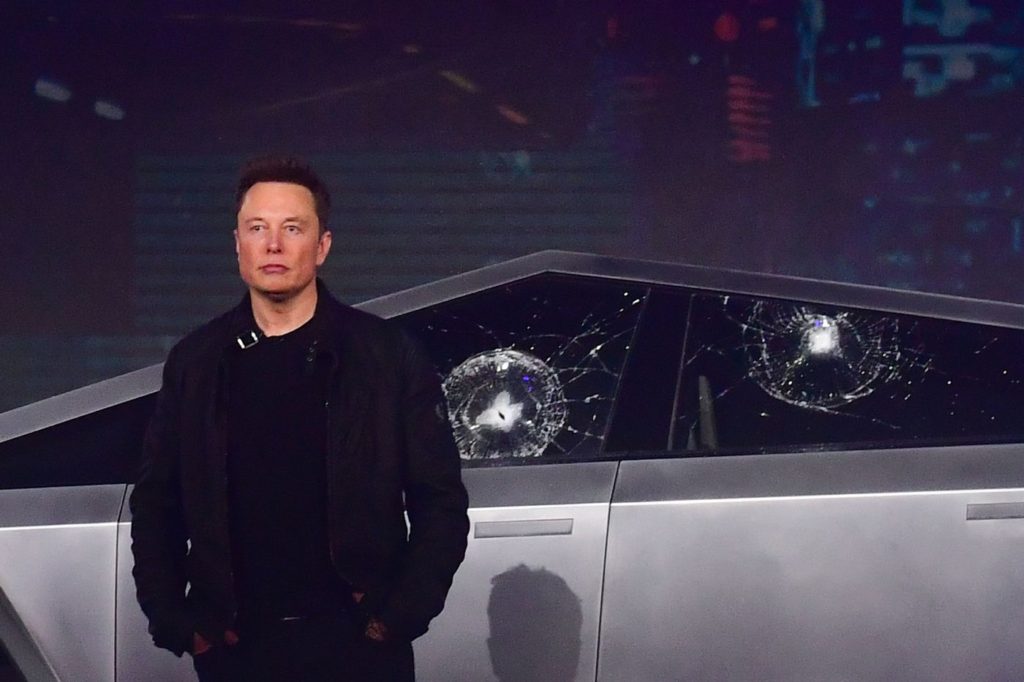
Tesla does not have dealerships to sell their cars. They set up their showrooms in the malls. They know where their customers are, and they want to stay close to them. The brand educates its customers through its showrooms. Unlike conventional cars that remain the same throughout their life, Tesla offers over the air software upgrades that improve the vehicles’ performance. This feature also provides customers a value proposition.
In 2018, Musk-led SpaceX launched the Tesla Roadster into space as a payload for Falcon Heavy. Many lauded Musk’s sense of brand management and went ahead to say that it was the most outstanding ever car commercial without a cent spent on advertising. The Roadster continues to revolve around the Sun.
Overall they have a unique branding strategy for targeting their customers. Their marketing revolves around trendsetting, playing hard to get, innovation, and desirability.
Also Read: Tata Motors – The Most Comprehensive Automaker Of The World
Tesla’s growth over the years
Tesla’s growth over the years has been remarkable, as the company has gone from a small start-up in 2003 to one of the most valuable car manufacturers in the world. Here’s a detailed overview of Tesla’s growth over the years:
Early Years (2003-2008): Tesla was founded in 2003 by Elon Musk, Martin Eberhard, Marc Tarpenning, JB Straubel, and Ian Wright. The company’s first product was the Tesla Roadster, a high-performance electric sports car. The Roadster was introduced in 2008 and was the first production electric car to use lithium-ion battery technology.
Expansion into Mass Market (2008-2016): After the success of the Roadster, Tesla shifted its focus to developing more affordable electric cars for the mass market. In 2012, the company introduced the Model S, a luxury electric sedan. The Model S received critical acclaim and was followed by the Model X, a luxury electric SUV, in 2015. In 2016, Tesla introduced the Model 3, a more affordable electric car aimed at the mass market.
Manufacturing and Production (2016-Present): As Tesla expanded its product line, the company also focused on increasing its manufacturing and production capabilities. In 2017, Tesla began production of its Gigafactory in Nevada, which produces lithium-ion batteries for its electric cars and energy storage products. The company also opened a factory in Shanghai, China in 2019, which produces Model 3 and Model Y vehicles for the Chinese market. In 2021, Tesla began production at its new factory in Austin, Texas, which produces Model Y vehicles for the US market.
Financial Growth: Tesla’s financial growth has been impressive, with the company’s revenue growing from $204 million in 2010 to $31.5 billion in 2020. The company has also turned profitable in recent years, with net income of $721 million in 2020. Tesla’s market capitalization has grown from around $2 billion in 2012 to over $800 billion in 2021, making it one of the most valuable car manufacturers in the world.
Energy Products: In addition to its electric vehicles, Tesla has also expanded into energy products, including solar panels, energy storage, and solar roofs. Tesla’s energy products have been well-received and have contributed to the company’s overall growth.
Overall, Tesla’s growth over the years has been driven by its focus on developing high-quality electric vehicles, expanding its manufacturing and production capabilities, and entering new markets. The company’s financial success and expansion into energy products have also contributed to its growth and position as one of the most valuable car manufacturers in the world.
The way ahead for Tesla
Tesla is already the most valuable carmaker in the world right now in terms of market capitalization. Its worth is more than triple the combined worth of General Motor and Ford Motor. Tesla is also planning to set up a Gigafactory in India by 2021. A Gigafactory of Tesla in Germany is expected to be functional by 2021. The company is continuing the journey it started in 2003.
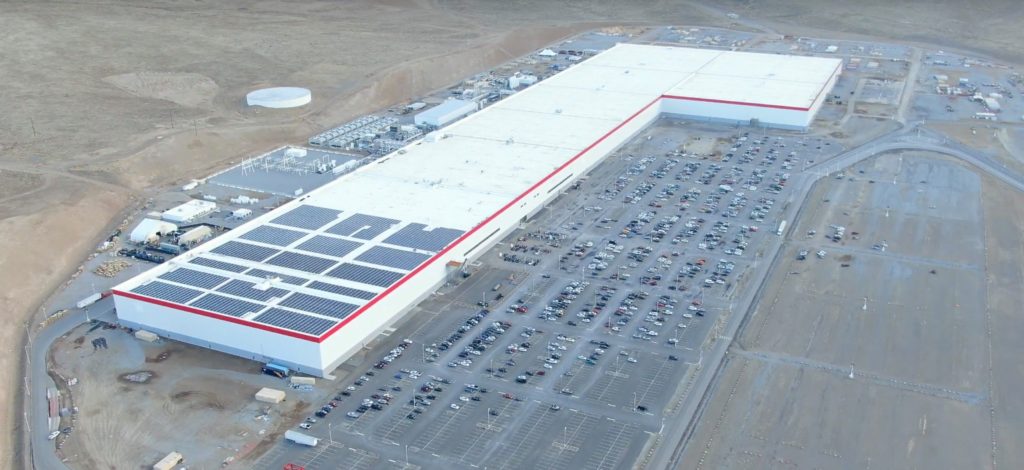
With his innovative approach and creative flair, Elon Musk has the right approach to take the company forward. The story centered around creative ideas, and innovation is all set to continue in the future.
To read more content like this, subscribe to our newsletter.
